
Last week AMD released their new R7 265 graphics card, and KitGuru was on hand to review the custom cooled Sapphire version. AMD tweaked their old HD7850 design and dropped the price to £100 in an attempt to dominate the market. Today we are looking at Nvidia's new budget grade enthusiast gaming card, the GTX 750 Ti.

In this review we will be focusing on the MSI GTX 750 Ti OC Twin Frozr. This card has received the full ‘MSI treatment' – enhancing the reference design significantly with a two fan cooling system and improved heatsink. The MSI ‘OC' version is unsurprisingly clocked higher than the reference Nvidia design and we will discuss the changes shortly.

We did also receive a reference GTX 750 ti from Nvidia and while it isn't as exciting as the MSI version we will be including results from both cards in our tests today. Both solutions take all the power they need direct from the PCIe slot. If you have a really good memory, you will recall that the previous generation GTX650 Ti required power from an additional single 6 pin PCI E connector.
The GTX750 Ti is based around the Maxwell architecture which has been designed to enhance performance while optimising power efficiency per watt. The first Maxwell based GPU is codenamed GM107 and is designed for use in power limited environments such as notebooks and small form factor systems. Nvidia claim that the improvements in architecture mean that the GTX750 Ti will match the performance of their GTX480 flagship card from four years ago but with a TDP of only 60W. In real world terms, you get the same performance for only 25% of the power drain.
While the talking point of the Maxwell based GTX750 ti is primarily power efficiency, Nvidia do plan on releasing higher performance graphics cards using similar architecture at a later date.



The GM107 GPU has a single GPC, five Maxwell Streaming Multiprocessors (SMM) and two 64 bit memory controllers (128 bit). The reference card is clocked at 1020mhz although MSI have overclocked their Twin Frozr version to 1,085mhz, with a boost speed of 1,163mhz. Both cards have 16 ROP's, 53 TMU's and 640 CUDA cores.
The Nvidia reference card is using 2GB of Hynix GDDR5 memory, but MSI have opted for Samsung branded GDDR5 – as we will see on the next page of the article today.
The Maxwell SM architecture delivers improved efficiency and 35% more performance per CUDA core on shader limited workloads. Nvidia have changed the architecture with the SM scheduler architecture and algorithms having been rewritten to avoid stalling and further reducing the energy per instruction required for scheduling. Maxwell SM architecture enabled Nvidia to increase the number of SM's to five in GM107, compared to two in GK107 – and all with only a 25% increase in die area.
Nvidia have explained that the organisation of the SM has been changed. Each SM has been partitioned into four separate processing blocks, each with their own instruction buffer, scheduler and 32 CUDA cores. GK107 Kepler could have a non power of two number of CUDA cores, with some shared. The new partitioning simplifies the design and scheduling logic which reduces computation latency and saves area and power demand.
Pairs of processing blocks share four texture filtering units and a texture cache. The L1 compute cache function is now combined with the texture cache function and shared memory is a separate unit, shared across all four blocks. Each Maxwell SM is smaller than a Kepler SM but delivers around 90% of the performance. The smaller area means that Nvidia can incorporate many more SM's per GPU. The GM107 (v GK107) has 25 percent more texture performance, 1.7 times more CUDA cores and 2.3 greater shader performance.
Nvidia have improved Video capabilities with the latest hardware. Maxwell incorporates an improved NVENC block to deliver faster encode performance over Kepler – 6-8 times real time compared against 4 times. Nvidia report a 8-10 times faster decode rate too. Maxwell also has a new GC5 power state designed to drop the GPU power demand under light workload situations – such as when playing back video.

The MSI box is very nicely designed, featuring an image of their customary Dragon.


Inside, the accessories are minimal. A driver disc, quick users guide and some information relating to the UEFI BIOS switch on the card.




The MSI GTX750Ti OC Twin Frozr card (top two images) is substantially better looking than the reference card from Nvidia (bottom two images above), as we would expect. Both are built on black PCB's although the Nvidia reference sample only has a tiny heatsink and single fan on top.

The MSI card is longer, although neither card require a PCIe power connector, getting enough from the PCie slot alone.
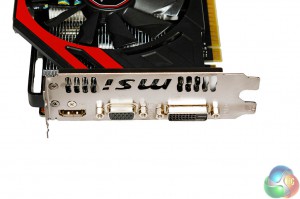
MSI GTX750 TI OC Twin Frozr connectivity, above. I have to admit I was shocked to see a VGA port on the back of a new GPU released in 2014 by MSI. Alongside is a HDMI port and dual link DVI connector, much more useful.

By comparison, the reference Nvidia GTX750 Ti (above) has dual DVI ports, and a mini HDMI connector.


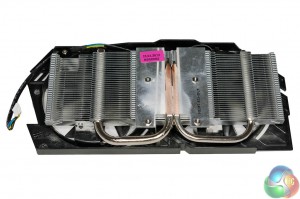
The MSI GTX750 Ti OC Twin Frozr is using high grade Samsung GDDR5 memory, while the reference board adopts Hynix GDDR5 memory.
The MSI Twin Frozr cooler comprises two direct touch copper heat pipes which run into two separate racks of aluminum fins on either side of the core.
On this page we present some super high resolution images of the product taken with the 24.5MP Nikon D3X camera and 24-70mm ED lens. These will take much longer to open due to the dimensions, especially on slower connections. If you use these pictures on another site or publication, please credit Kitguru.net as the owner/source. You can right click and ‘save as’ to your computer to view later.



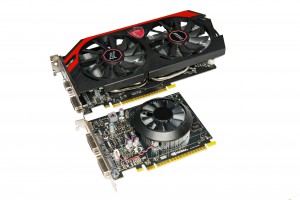




For our review today we are using the ForceWare 334.67 / 334.69 and Catalyst 14.1 beta 1.6 drivers.

We are using one of our brand new test rigs supplied by PCSPECIALIST and built to our specifications. If you want to read more about this, or are interested in buying the same Kitguru Test Rig, check out our article with links on this page.
We are using an Apple 30 inch Cinema HD monitor for this review today.
Comparison cards:
eVGA GTX760 SC (1072mhz core / 1502mhz memory)
Sapphire R7 265 Dual X (925mhz core / 1400mhz memory)
VTX3D R9 270X X Edition (1,080mhz core / 1400mhz memory)
ASUS R9 270 Direct CU II OC (975mhz core / 1,400mhz memory)
VTX3D HD7870 Tahiti LE (975mhz core / 1500mhz memory)
VTX3D VChamp HD7850 (1000mhz core / 1225mhz memory)
ASUS HD7850 (860mhz core / 1,200mhz memory)
Gigabyte GTX650TI (1,033mhz core / 1,350mhz memory)
Software:
Windows 7 Enterprise 64 bit
Unigine Heaven Benchmark
Unigine Valley Benchmark
3DMark Vantage
3DMark 11
3DMark
Fraps Professional
Steam Client
FurMark
Games:
Sleeping Dogs
Total War: Rome 2
Dirt Showdown
Tomb Raider
Metro Last Light
GRID 2
Alien V Predator
Splinter Cell Blacklist
Battlefield 4
All the latest BIOS updates and drivers are used during testing. We perform generally under real world conditions, meaning KitGuru tests games across five closely matched runs and then average out the results to get an accurate median figure. If we use scripted benchmarks, they are mentioned on the relevant page.
Unigine provides an interesting way to test hardware. It can be easily adapted to various projects due to its elaborated software design and flexible toolset.
A lot of their customers claim that they have never seen such extremely-effective code, which is so easy to understand.
Heaven Benchmark is a DirectX 11 GPU benchmark based on advanced Unigine engine from Unigine Corp. It reveals the enchanting magic of floating islands with a tiny village hidden in the cloudy skies. Interactive mode provides emerging experience of exploring the intricate world of steampunk.
Efficient and well-architected framework makes Unigine highly scalable:
- Multiple API (DirectX 9 / DirectX 10 / DirectX 11 / OpenGL) render
- Cross-platform: MS Windows (XP, Vista, Windows 7) / Linux
- Full support of 32bit and 64bit systems
- Multicore CPU support
- Little / big endian support (ready for game consoles)
- Powerful C++ API
- Comprehensive performance profiling system
- Flexible XML-based data structures

We use the settings shown at 1920×1080.



Performance of both cards is very good, just edging ahead of the Sapphire R7 265 Dual X and VTX3D Vchamp HD7850.
Valley Benchmark is a new GPU stress-testing tool from the developers of the very popular and highly acclaimed Heaven Benchmark. The forest-covered valley surrounded by vast mountains amazes with its scale from a bird’s-eye view and is extremely detailed down to every leaf and flower petal. This non-synthetic benchmark powered by the state-of-the art UNIGINE Engine showcases a comprehensive set of cutting-edge graphics technologies with a dynamic environment and fully interactive modes available to the end user.

We test with the settings above at 1920×1080.



The reference clocked GTX750 Ti falls a little behind the Sapphire R7 265 Dual X, although the faster MSI GTX750 Ti OC is 2 full frames per second faster at these settings.
Futuremark released 3DMark Vantage, on April 28, 2008. It is a benchmark based upon DirectX 10, and therefore will only run under Windows Vista (Service Pack 1 is stated as a requirement) and Windows 7. This is the first edition where the feature-restricted, free of charge version could not be used any number of times. 1280×1024 resolution was used with performance settings.



The AMD HD7850 and R7 265 score better in this older Direct X 10 based benchmark, by a noticeable margin.
3DMark 11 is designed for testing DirectX 11 hardware running on Windows 7 and Windows Vista the benchmark includes six all new benchmark tests that make extensive use of all the new features in DirectX 11 including tessellation, compute shaders and multi-threading. After running the tests 3DMark gives your system a score with larger numbers indicating better performance. Trusted by gamers worldwide to give accurate and unbiased results, 3DMark 11 is the best way to test DirectX 11 under game-like loads.If you want to learn more about this benchmark, or to buy it yourself, head over to this page.



Both GTX750 TI solutions perform slightly behind the HD7850 and R7 265.
3DMark is an essential tool used by millions of gamers, hundreds of hardware review sites and many of the world’s leading manufacturers to measure PC gaming performance.
Futuremark say “Use it to test your PC’s limits and measure the impact of overclocking and tweaking your system. Search our massive results database and see how your PC compares or just admire the graphics and wonder why all PC games don’t look this good.
To get more out of your PC, put 3DMark in your PC.”

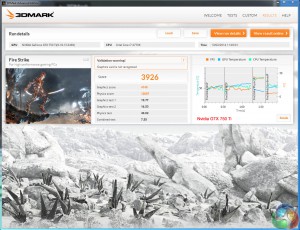

We are beginning to see a pattern, as the GTX750Ti seems to be lacking a little performance when compared directly to the HD7850 and R7 265.
Aliens V Predator has proved to be a big seller since the release and Sega have taken the franchise into new territory after taking it from Sierra. AVP is a Direct X 11 supported title and delivers not only advanced shadow rendering but high quality tessellation for the cards on test today. To test the cards we used a 1920×1080 resolution with DX11, Texture Quality Very High, MSAA Samples 1, 16 af, ambient occulsion on, shadow complexity high, motion blur on.

The reference clocked Nvidia GTX750 Ti matches the Sapphire R7 265 Dual X frame for frame, averaging 61 frames per second.
Sleeping Dogs started development as an original title, but was announced in 2009 as True Crime: Hong Kong, the third installment and a reboot of the True Crime series.As a result of the game’s high development budget and delays, it was canceled by Activision Blizzard in 2011. Six months later, it was announced that Square Enix had picked up the publishing rights to the game, but the game was renamed Sleeping Dogs in 2012 since Square Enix did not purchase the True Crime name rights.


This game is still a system killer at these maximised settings. We test at 1920×1080.

The only cards in this test that can maintain smooth frame rates at these settings are the GTX760 SC, R9 270X and HD7870 Tahiti LE.
Tomb Raider received much acclaim from critics, who praised the graphics, the gameplay and Camilla Luddington’s performance as Lara with many critics agreeing that the game is a solid and much needed reboot of the franchise. Much criticism went to the addition of the multiplayer which many felt was unnecessary. Tomb Raider went on to sell one million copies in forty-eight hours of its release, and has sold 3.4 million copies worldwide so far.


We test with the Ultimate profile, as shown above @ 1920×1080.

We can see a significant improvement over the GTX650Ti from the last generation, although both reference and overclocked MSI board fall a little short of the Sapphire R7 265 Dual X.
Total War ROME 2 is the eighth stand alone game in the Total War series, it is the successor to the successful Rome: Total War title. The Warscape Engine powers the visuals of the game and the new unit cameras will allow players to focus on individual soldiers on the battlefield, which in itself may contain thousands of combatants at a time.
Creative Assembly has stated that they wish to bring out the more human side of war this way, with soldiers reacting with horror as their comrades get killed around them and officers inspiring their men with heroic speeches before siege towers hit the walls of the enemy city.
This will be realised using facial animations for individual units, adding a feel of horror and realism to the battles.


To test the cards today we use the ULTRA profile settings shown above at 1920×1080.

The reference card frame rate drops a little below the sweet spot of 25 a couple of times. The overclocked MSI GTX750 Ti TF manages to produce a couple of extra frames per second, which is noticeably smoother in real world terms. The Sapphire R7 265 Dual X delivers a much better overall result however, maintaining a 30+ frame rate at all times.
Dirt Showdown is the latest title in the franchise from Codemasters, based around the famous Colin McRae racing game series, although it no longer uses his name, since he passed away in 2007.


Today we test the hardware at 1920×1080 with the Ultra profile and 8 x MSAA.

Noticeable improvements over the last generation Nvidia GTX650Ti, but still a way behind the HD7850.
Metro: Last Light takes place one year after the events of Metro 2033, proceeding from the ending where Artyom chose to call down the missile strike on the Dark Ones. The Rangers have since occupied the D6 military facility, with Artyom having become an official member of the group. Khan, the nomad mystic, arrives at D6 to inform Artyom and the Rangers that a single Dark One survived the missile strike. 4A Games’ proprietary 4A Engine is capable of rendering breathtaking vistas, such as those showing the ruined remnants of Moscow, as well as immersive indoor areas that play with light and shadow, creating hauntingly beautiful scenes akin to those from modern-day photos of Pripyat’s abandoned factories and schools.

We test this game with the built in benchmark with very high quality settings at 1920×1080 – details shown in the image above.
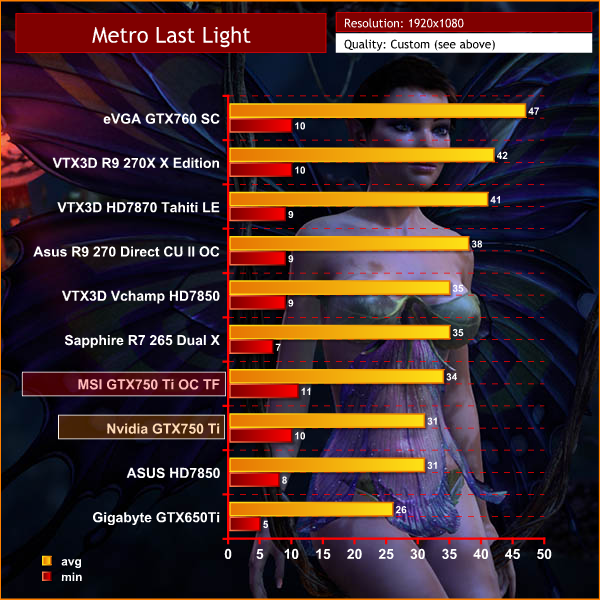
A good showing from the overclocked MSI GTX750Ti solution, averaging 34 frames per second – just a single frame per second behind the Sapphire R7 265 Dual X.
Grid 2 is the sequel to the racing video game Race Driver: Grid. It was developed and published by Codemasters. The game includes numerous real world locations such as Paris, numerous United States locations, and many more, and also includes motor vehicles spanning four decades. In addition, it includes a new handling system that developer Codemasters has dubbed ‘TrueFeel’, which aims to hit a sweet spot between realism and accessibility.



We test at 1920×1080 with the Ultra image quality preset, as shown above. 8x MSAA was enabled to improve image quality.

Smooth performance from the GTX750 Ti cards, holding a frame rate above 35 at all times.
Splinter Cell Blacklist is the sixth installment in the series.
The game begins with Sam Fisher and his old friend Victor Coste who are about to depart from Andersen AFB in Guam when an unknown enemy force destroys the entire base.
Assisted by hacker specialist Charlie Cole, Sam and Vic manage to escape, although Vic is injured after protecting Sam from a grenade. Soon after, a terrorist group calling itself “The Engineers” assumes responsibility for the attack and announce that it was the first of a deadly countdown of escalating attacks (called “The Blacklist”) on United States assets, declaring that they will halt the attacks only after the U.S. government accomplish the demand of calling back all American troops deployed abroad.


We test with a series of high image quality settings as shown above and with 4x MSAA and 16 x Anisotropic filtering enabled.

The engine is too demanding at these settings for many of the cards on test today, dropping frequently below 20 frames per second.
Battlefield 4 (also known as BF4) is a first-person shooter video game developed by EA Digital Illusions CE (DICE) and published by Electronic Arts. The game is a sequel to 2011′s Battlefield 3. Battlefield 4 is built on the new Frostbite 3 engine. The new Frostbite engine enables more realistic environments with higher resolution textures and particle effects. A new “networked water” system is also being introduced, allowing all players in the game to see the same wave at the same time. Tessellation has also been overhauled.
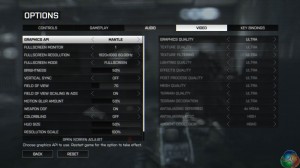
We test the Sapphire R7 265 in both ‘Direct X’ and ‘Mantle’ modes and compare against the new GTX750 Ti cards and the Gigabyte GTX650Ti. We are using the latest patch as of 12th February 2014.

Performance is borderline playable, dropping a little below what we would normally consider as acceptable. The R7 265 scores higher, and the frame rates are noticeably smoother throughout.
The tests were performed in a controlled air conditioned room with temperatures maintained at a constant 24c – a comfortable environment for the majority of people reading this.Idle temperatures were measured after sitting at the desktop for 30 minutes. Load measurements were acquired by playing Crysis Warhead for 30 minutes and measuring the peak temperature. We also have included Furmark results, recording maximum temperatures throughout a 30 minute stress test. All fan settings were left on automatic.


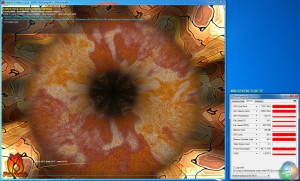
The Nvidia reference cooler may be tiny, but the core is clearly cool running. The Twin Frozr version of the GTX 750 Ti runs incredibly cool, under 50c when gaming !
We have built a system inside a Lian Li chassis with no case fans and have used a fanless cooler on our CPU. The motherboard is also passively cooled. This gives us a build with almost completely passive cooling and it means we can measure noise of just the graphics card inside the system when we run looped 3dMark tests.
We measure from a distance of around 1 meter from the closed chassis and 4 foot from the ground to mirror a real world situation. Ambient noise in the room measures close to the limits of our sound meter at 28dBa. It isn’t a real world situation to be measuring with a case panel off only a few centimeters away from a video card.
Why do this? Well this means we can eliminate secondary noise pollution in the test room and concentrate on only the video card. It also brings us slightly closer to industry standards, such as DIN 45635.
KitGuru noise guide
10dBA – Normal Breathing/Rustling Leaves
20-25dBA – Whisper
30dBA – High Quality Computer fan
40dBA – A Bubbling Brook, or a Refridgerator
50dBA – Normal Conversation
60dBA – Laughter
70dBA – Vacuum Cleaner or Hairdryer
80dBA – City Traffic or a Garbage Disposal
90dBA – Motorcycle or Lawnmower
100dBA – MP3 player at maximum output
110dBA – Orchestra
120dBA – Front row rock concert/Jet Engine
130dBA – Threshold of Pain
140dBA – Military Jet takeoff/Gunshot (close range)
160dBA – Instant Perforation of eardrum

The MSI GTX750Ti Twin Frozr cooler is fantastic, and is the best performer we have tested in some time. It obviously helps that the Nvidia GM107 core runs very cool.
To test power consumption today we are using a Keithley Integra unit and we measure power consumption from the VGA card inputs, not the system wide drain. We measure results while gaming in Crysis Warhead and the synthetic stress test Furmark and record both results.
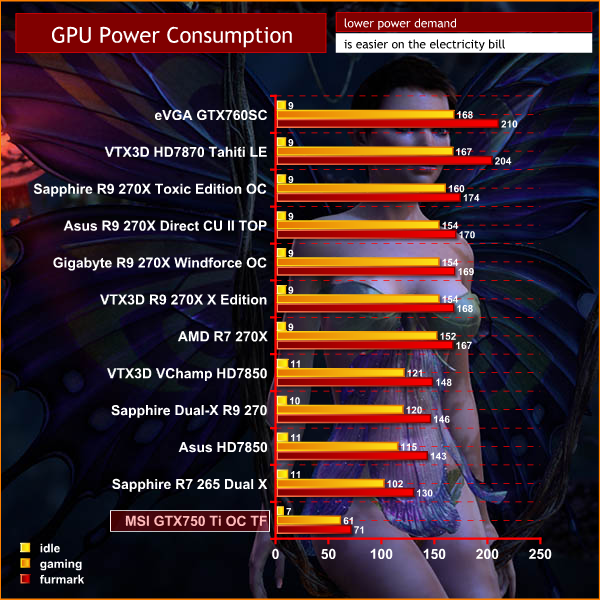
The MSI GTX750Ti OC Twin Frozr is an incredibly efficient GPU … demanding only 60 watts at the slot when gaming.
To overclock the MSI GTX750 Ti OC Twin Frozr, we used the latest version of MSI Afterburner, which is based on RivaTuner.


There is plenty of overclocking headroom available on the core. We managed to get complete stability by moving the slider as far in MSI Afterburner as we could – hitting 1,220mhz.
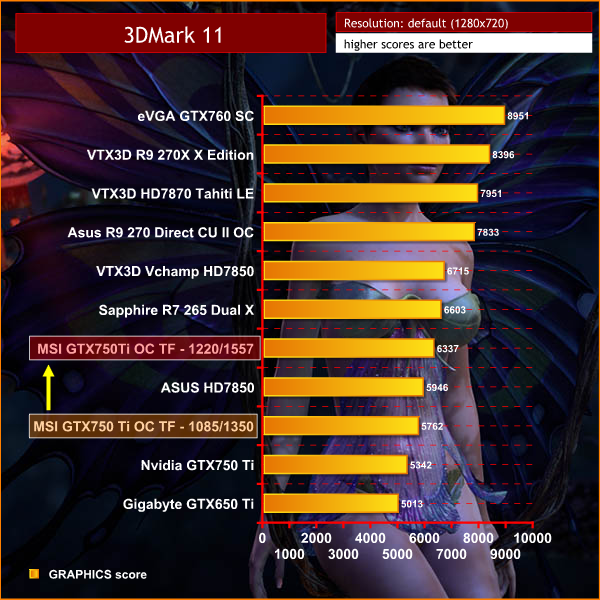

The overclock helps to push performance past the reference clocked HD7850, to 6,337 points.
Last week AMD tweaked their HD7850 design of yesteryear, making some I/O output and power changes while dropping the price to a highly competitive £100. There is no doubt that the new R7 265 graphics card is currently the fastest £100 budget oriented enthusiast grade gaming card that money can buy.
In some ways though I have to admit I was disappointed to see that AMD hadn't decided to bring a completely new design to market. Tweaking graphics cards and releasing them under a new name doesn't really push the market forward, although it is not only AMD who have fallen foul of ‘rebadging' and re-releasing hardware in recent years.
The MSI GTX 750 Ti OC Twin Frozr reviewed today is clearly not in the same performance bracket as the newly launched AMD R7 265, although I feel to end our conclusion with only a frame rate comparison would be a great injustice to Nvidia.
Nvidia's new Maxwell architecture is remarkable. Nvidia have placed a focus on reducing power consumption as far as possible and the fact that the GTX 750 Ti doesn't even require a PCIe power cable for operation is significant in itself.
The MSI GTX 750 TI OC is an extremely quiet running card, breaking new records in our testing, and the maximum thermal reading of 49c when gaming is one of the best results we have ever seen in our labs. For those people building a system in a new, space restricted HTPC chassis, power demand, noise and heat output are critical areas to take into consideration.
While every sample will exhibit varying levels of core headroom, the MSI sample we received for review was remarkable. We managed to maximise the sliders in MSI Afterburner, hitting a peak of 1,220mhz. This helped to drive performance past the reference clocked HD7850, a highly capable solution which requires additional juice from a single 6 pin PCI e power connector.
I have been extremely impressed with the MSI GTX750 TI OC Twin Frozr graphics card. While it struggles to match the AMD R7 265 at 1080p, The new Nvidia Maxwell design is undoubtedly a great step forward in regards to dropping power demand, noise and heat output. When it comes to frame rate performance, when overclocked, the GTX750Ti OC manages to outclass the reference clocked HD7850, while consuming almost half the power.
If you are in the market for a new budget graphics card with a primary focus on reducing power demand, heat output and noise emissions, then the MSI GTX750 Ti OC Twin Frozr should be right at the top of your shortlist.
Nvidia have said the GTX750 Ti will be priced around £115 inc vat when it is released.
Discuss on our Facebook page, over HERE.
Pros:
- Maxwell is a breakthrough in power consumption.
- extremely quiet running.
- good frame rate performance.
- exceptionally cool running.
- no need for PCIe power connectors.
- not a rebadged card from 2 years ago.
- massive overclocking headroom.
Cons:
- AMD's R7 265 is cheaper, and has greater frame rate performance.
- MSI could have clocked the core much higher.
Kitguru says: Maxwell is a performance per watt breakthrough.

 KitGuru KitGuru.net – Tech News | Hardware News | Hardware Reviews | IOS | Mobile | Gaming | Graphics Cards
KitGuru KitGuru.net – Tech News | Hardware News | Hardware Reviews | IOS | Mobile | Gaming | Graphics Cards



Where is the image in the background of your benchmark results from?
Nvidia’s new dawn demo.